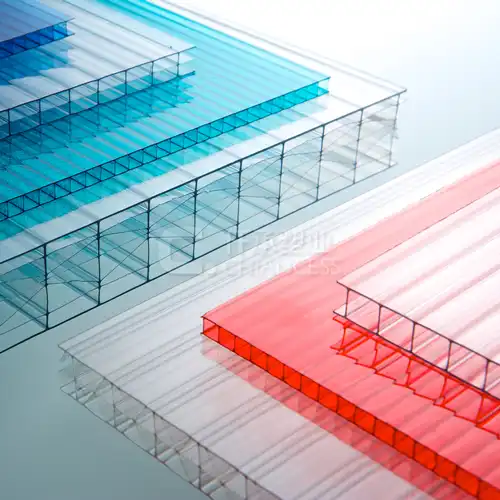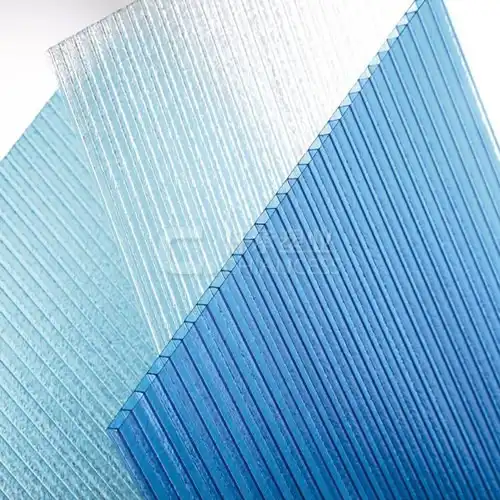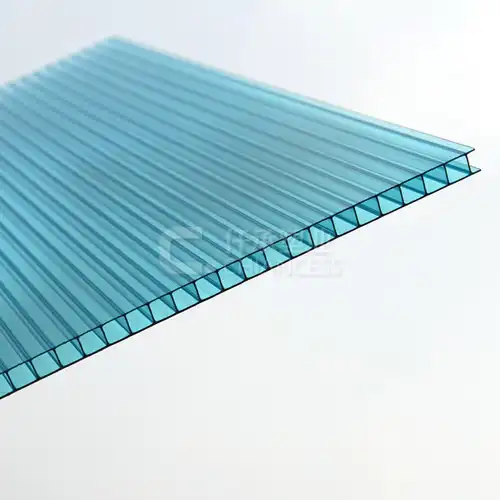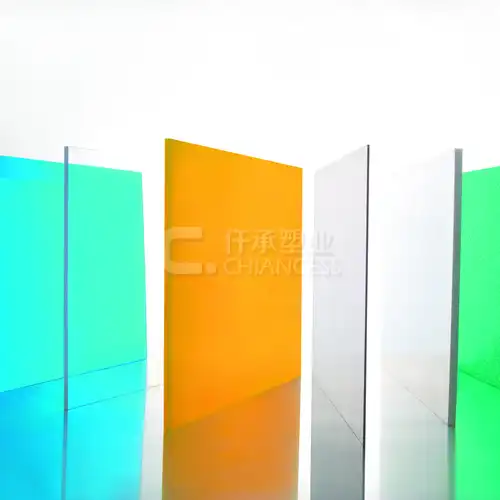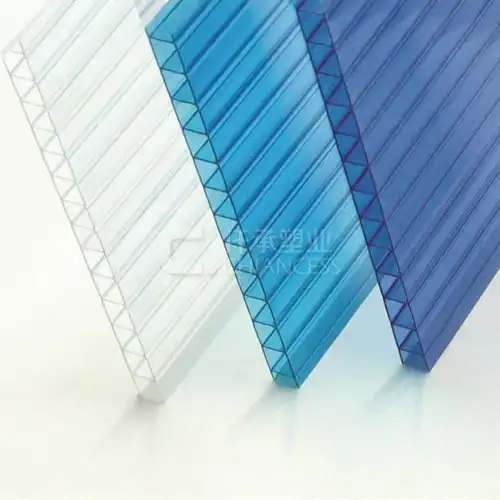June 25, 2024
Polycarbonate canopies offer durability and versatility, but like any other material, they may require occasional maintenance or repairs. If you're facing issues with your polycarbonate canopy, whether it's cracks, scratches, or other damage, you may be wondering how to fix it. In this blog, we'll explore effective solutions for repairing polycarbonate canopies, ensuring they remain functional and visually appealing.
How to Repair Cracks and Breaks in Polycarbonate Canopies?
Cracks and breaks in polycarbonate canopies can compromise their structural integrity and detract from their aesthetic appeal. Here's how to effectively repair these issues:
Assessing the Damage: Begin by thoroughly inspecting the canopy to identify the extent of the damage. Small cracks or breaks may be repairable, while larger ones may require more extensive measures.
Cleaning the Surface: Clean the damaged area of the canopy with a mild detergent and warm water to remove any dirt, debris, or contaminants. Ensure the surface is completely dry before proceeding with repairs.
Applying Adhesive or Sealant: For small cracks or breaks, apply a specialized polycarbonate adhesive or sealant to the damaged area according to the manufacturer's instructions. Ensure the adhesive is compatible with polycarbonate materials for optimal bonding strength.
Reinforcing with Patching Material: For larger cracks or breaks, consider reinforcing the damaged area with a patching material such as polycarbonate sheet or fiberglass. Cut the patch to size, apply adhesive around the edges, and carefully press it onto the damaged area, ensuring a secure bond.
Allowing for Cure Time: Allow the adhesive or sealant to cure completely before exposing the canopy to stress or environmental factors. Follow the manufacturer's recommended cure time to ensure maximum strength and durability.
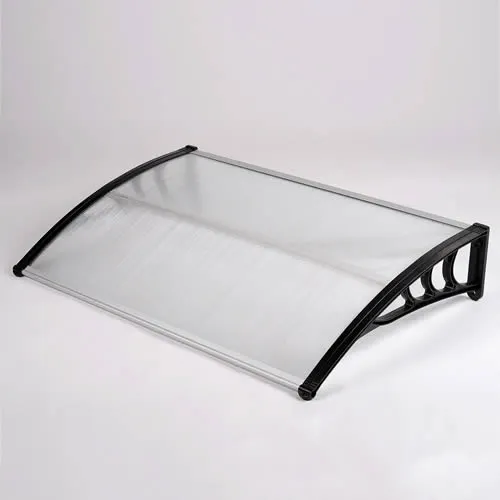
How to Remove Scratches and Blemishes from Polycarbonate Canopies?
Scratches and blemishes on polycarbonate canopy can detract from their appearance and clarity. Here's how to effectively remove these imperfections:
Gentle Cleaning: Start by gently cleaning the scratched area of the canopy with a soft cloth and mild soap or detergent. Avoid using abrasive cleaners or harsh chemicals, as these can further damage the surface.
Polishing Compound: Apply a specialized plastic polishing compound to the scratched area using a clean, soft cloth. Work the compound into the scratch in a circular motion, applying gentle pressure.
Buffing the Surface: After applying the polishing compound, use a clean, dry cloth to buff the surface of the canopy, removing any excess compound and restoring clarity to the plastic.
Repeat as Needed: For deeper scratches or stubborn blemishes, you may need to repeat the polishing process multiple times until the desired results are achieved. Take care not to over-polish the surface, as this can cause further damage.
How to Prevent Yellowing and Discoloration of Polycarbonate Canopies?
Yellowing and discoloration are common issues that can affect the appearance of polycarbonate canopies over time. Here are some preventive measures to help maintain their clarity and transparency:
UV Protective Coating: Apply a specialized UV protective coating to the surface of the canopy to shield it from the harmful effects of ultraviolet radiation. These coatings help prevent yellowing and discoloration caused by prolonged exposure to sunlight.
Regular Cleaning and Maintenance: Keep the canopy clean and free of dirt, debris, and pollutants by regularly cleaning it with a mild detergent and warm water. Avoid using abrasive cleaners or scrubbing brushes, as these can scratch the surface and promote yellowing.
Shading and Protection: Install shading or protective structures above the canopy to reduce direct exposure to sunlight, especially during peak hours. This helps minimize UV damage and prolongs the lifespan of the polycarbonate material.
By following these preventive measures and taking proactive steps to care for your polycarbonate canopy, you can effectively prevent yellowing and discoloration, ensuring it remains clear, transparent, and visually appealing for years to come.
Conclusion
Maintaining and repairing polycarbonate canopies doesn't have to be a daunting task. By following the tips and techniques outlined in this blog, you can effectively address common issues such as cracks, scratches, and yellowing, ensuring your canopy remains functional and visually appealing for years to come.
If you're in need of high-quality polycarbonate canopy for your canopy or other projects, don't hesitate to contact us at simon@chiancess.com. We offer a wide range of polycarbonate products to meet your needs and specifications.
References
1. Bognár, B., & Németh, C. (2019). Durability of Polycarbonate Sheets in Outdoor Applications. *International Journal of Engineering and Technology (UAE), 8*(6), 2464-2472.
2. Gao, Y., Huang, B., & Song, S. (2019). The mechanical properties and weather resistance of corrugated polypropylene boards. *Polymer Composites, 40*(3), 987-995.
3. Hsiao, S. W., Yang, S. Y., & Wang, L. C. (2015). Lightweight corrugated polypropylene panels for greenhouse applications. *Construction and Building Materials, 79*, 191-197.
4. Kim, J. R., Kim, H. S., & Lee, K. S. (2016). Impact resistance and energy absorption of corrugated polypropylene boards. *Composite Structures, 141*, 195-204.
5. Kuciel, S., & Kufel, L. (2018). Experimental investigation of the thermal insulation properties of multi-wall polycarbonate sheets. *Energy and Buildings, 158*, 1167-1174.
6. Lee, K. J., & Kim, H. K. (2017). Impact behavior of corrugated polypropylene sheets under high-velocity impact loading. *International Journal of Impact Engineering, 101*, 27-35.
7. Liu, D., He, L., & Wang, Z. (2017). Fabrication and properties of lightweight corrugated polypropylene panels with controllable thermal insulation. *Journal of Materials Science, 52*(14), 8489-8498.
8. Mistry, J., & Rajeev, R. (2015). Comparative study of different glazing materials used for greenhouses. *Journal of Applied Polymer Science, 132*(15), 41784.
.webp)







